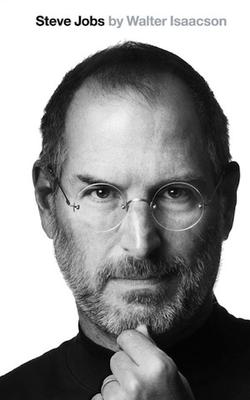Steve Jobs
In 1976, Steve Jobs and Steve Wozniak created the first Apple, computer.
Just as importantly, their company had received seed capital from early investors. The next year, they were ready to unveil their newest creation, the Apple II, their first mass-produced computer.
They debuted the home computer at that year’s West Coast Computer Faire, and it went on to become one of the first successful mass-produced desktop computers. Jobs’ close attention to the machine’s appearance was already evident based on the time he spent designing its beige plastic case. Steve Wozniak was primarily responsible for the technology of the Apple II.
The computer’s success made Jobs a millionaire by the time he was 23, in 1978. That same year, with the company growing, Jobs and Wozniak hired Mike Scott from National Semiconductor to serve as CEO. By late 1980, Apple was ready to hold an initial public offering (IPO), a sale that generated more capital than any IPO since the 1956 Ford Motor Company’s (NYSE: F) offering, and created roughly 300 millionaires instantly, more than any IPO in history.
By 1981, Apple was one of the three top producers of personal computers in the United States, and possibly the biggest. But other, bigger competitors were getting into the market, most notably International Business Machines Corp., whose most popular model surpassed the Apple II as the best-selling PC by 1983. The next year, the computing colossus also boasted $4 billion in annual PC revenue, more than doubling Apple’s revenues. (See
But Apple was on the verge of a breakthrough that would redefine personal computing. The breakthrough had its roots in 1979, when Jobs first saw the Xerox Alto. The Alto was, essentially, the first mouse-driven computer. Until then, operating a computer was a matter of learning the computer’s language and typing in commands. The visual interface of the Alto changed all that, and Jobs immediately saw the potential.
Apple unleashed the mouse-driven user interface to the public in a computer it called the.
his own money, which the company burned through in its first year. Billionaire Ross Perot stepped in as an investor, and the company released its first product, the NeXT Computer, in 1990. It was state-of-the-art, but, at $9,999, too expensive for most, especially its target customer—the education sector. By 1993, the company had only sold 50,000 machines, and decided to switch to software development. The move led to its first profit, when it netted $1 million in 1994.
At the same time, however, Jobs became involved with a venture that would go a long way toward cementing his reputation and his fortune, when he bought Lucasfilm's computer graphics division for $10 million. The standalone company would be renamed Pixar and create a generation of iconic children’s movies, including Toy Story, Monsters, Inc., Finding Nemo, The Incredibles and WALL-E. In 2006..)
Just seven months after the deal was finalized, Jobs was named Apple’s interim CEO. To turn the company toward profitability, he quickly slashed a number of beloved projects and acquired a reputation for firing people on the spot. He also modified the company’s software licensing business, making it too costly for other companies to continue to make machines that ran Macintosh software.
Jobs began to look beyond the PC again, first with the groundbreaking iPod digital music player, which changed the way people listen to music. Prior to the iPod’s launch in 2001, very few people listened to music on portable digital players. By 2012, more than 350 million devices had been sold worldwide.
The iPod’s sleek design and easy user interface paved the way for the company’s 2007 release of the iPhone, which revolutionized cellular phone design. In 2014 alone, Apple sold roughly 170 million iPhones worldwide.
Not content to forever alter the way people used mobile phones and listened to music, Jobs launched the iPad in 2010. The very first version of the compact tablet computer with few buttons and a touch screen sold more than 250 million units. It has been credited with singlehandedly revitalizing the previously moribund market for tablet computers.
Jobs famously micro-managed every detail of the devices' design, functionality and user-interface. The success of all three devices was profound. By 2011, Apple surpassed Exxon Mobil Corp as the largest corporation in the United States, with a market capitalization of roughly $355 billion. At the beginning of Jobs’ second reign, in 1997, Apple’s market cap was approximately $3 billion.
In 2011, with Apple at the summit of not just the tech industry, but of all of American business, Jobs resigned as Apple's CEO. He was suffering from pancreatic cancer, and knew he would soon die. Even after his resignation, he stayed on as chairman of the board, continuing to work for Apple until the day before his death.



